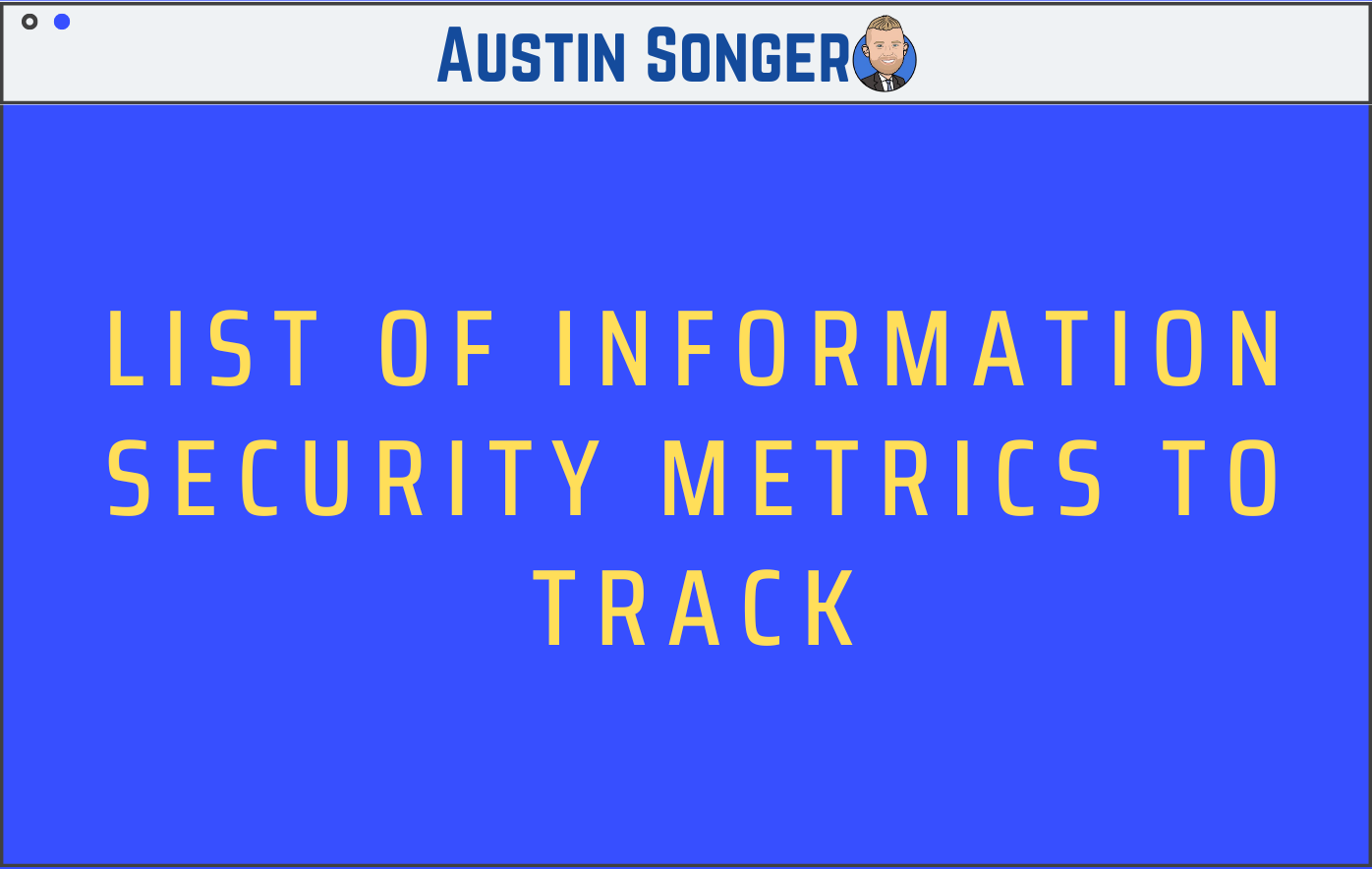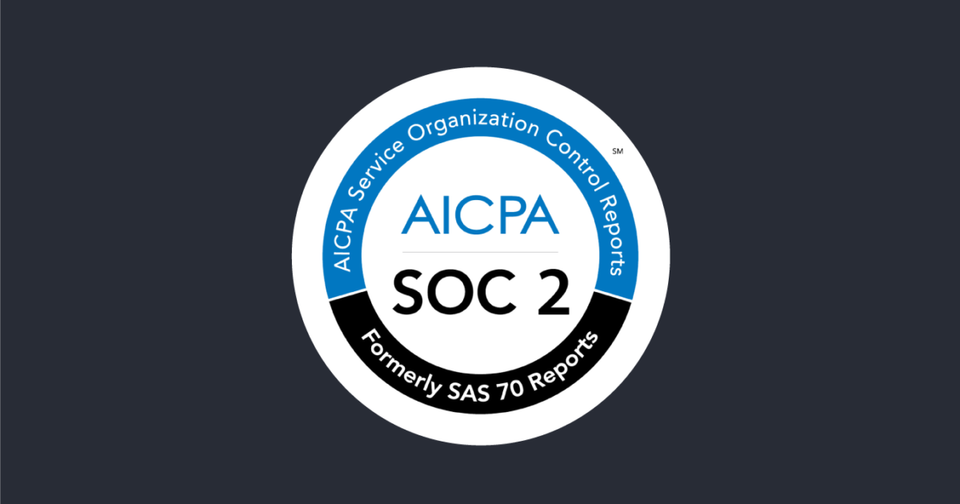List of Information Security Metrics to Track

Organizational
- Information Security Budget as Percentage of IT Budget
- Information Security Budget Spend Breakdown
- Percentage of Users With Security Exceptions
- Percentage of Staff Fully Trained on Infosec Awareness
- Compliance Percentages (PCI/SOX/HIPAA/etc.)
- Employee Behavior Metrics (hunting anomalies to correlate to risk factors)
Operational
Patch Management
- Average - Length of time to patch systems
- Average - Length of time to patch network components
- Percentage of systems in compliance with organizationally mandated configuration guidance
- Percentage of managed systems for which an automated patch management process is used
- Average - Length of time from patch release to patch installation
Vulnerability Management
Infrastructure
- Percentage of managed systems checked for vulnerabilities in accordance with the organization's policy
- Average - Length of time for the organization to mitigate identified managed systems vulnerabilities.
- Percentage of systems without“high severity vulnerabilities based on Common Vulnerability Scoring System (CVSS) scoring
Application
- Average - Length of time for the organization to mitigate identified Hackerone Submitted vulnerabilities.
Access Control and Identity Accessment Management (Okta)
- Average Number of Account Lockouts
- Percentage of users for whom privileges can be modified dynamically
- Percentage of such users whose privileges are modified dynamically
- Percentage of system services for which privileges can be modified randomly
- Percentage of such resources for which privileges are modified randomly
- Random reviews performed on privilege definitions/assignments [yes/no]
- Percentage of cyber resources to which access is controlled based on criticality
- Percentage of cyber resources to which access is controlled based on sensitivity
- Percentage of users with privileged/administrator access
Data Management
- Percentage of cyber resources which are backed up
- Percentage which are backed up into hot backups
- Percentage which are backed up into cold / archival storage
- Time since restoration / reconstitution processes were last exercised
- Average time to restore
- Average time to back up
- Frequency of backup
Business Continuity and Disaster Recovery
- Percentage of information systems for which annual testing of contingency plans has been conducted.
- Time between initiation of recovery procedures and completion of documented milestones in the recovery, contingency, or continuity of operations plan
- Time between event or detected circumstances which motivated recovery procedures and achievement of [minimum acceptable, target] mission MOPs
- Percentage of mission capabilities for which [minimum acceptable, target] MOPs are achieved within [minimum threshold, target] period of time since initiating event
- Percentage of mission-critical cyber resources which are recovered from a backup
- Size of gap between lost and recovered mission-critical resources (time service or connection was unavailable, number of records not recovered)
- Percentage of mission-essential processes and interfaces restored to pre-disruption state
- Length of time to reconstitute a key information asset from a backup data store
- Percentage of non-mission-critical resources which are recovered from a backup
- Percentage of cyber resources for which access control is maintained throughout the recovery process
- Percentage of cyber resources for which access controls at multiple levels or using different mechanisms are maintained consistently throughout the recovery process
- Percentage of cyber resources for which auditing or monitoring is maintained throughout the recovery process
- Duration of gap in auditing or monitoring for [mission-critical resource, non-mission-critical resource] during recovery.
Change Management
- Mean-time to Complete Changes
- Percent of Changes with Security Review
- Percentage of Changes with Security Exceptions
- Number of Non-managed Changes (outside of formal process)
- Percentage of cyber resources which can be reconfigured on demand
- Time between decision to reconfigure resources and completion of reconfiguration
- Percentage of cyber resources which can be [automatically, manually] reconfigured
- Time between decision to redeploy resources and completion of redeployment
- Number of differences between initial set of resources and redeployed set
- Percentage of cyber resources that are properly configured



